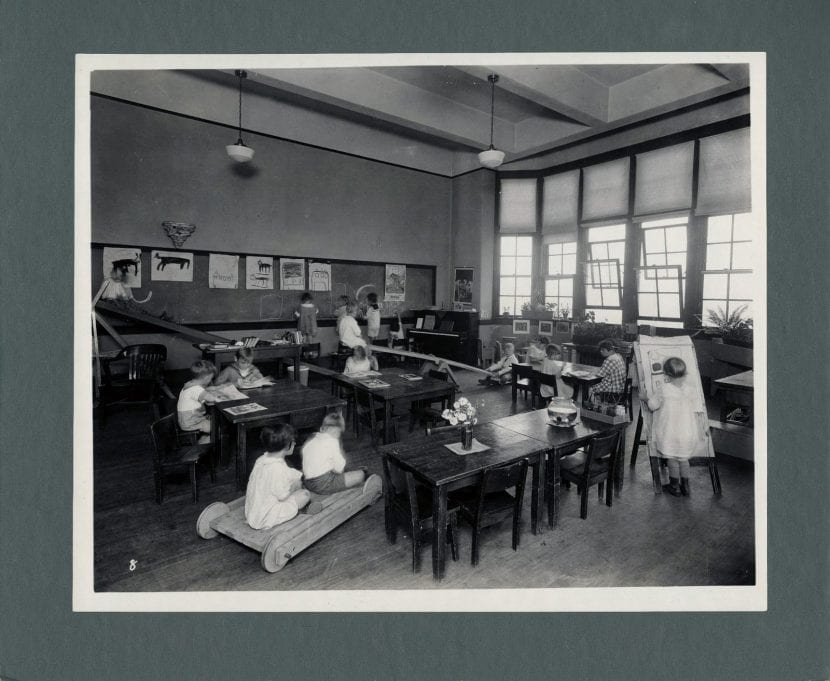This blog post was written by Armando Suarez, former Archives Associate at Towson University.
The records of the Lida Lee Tall School (circa 1919-1982) are now available for research in the University Archives at the Albert S. Cook Library. The finding aid is searchable online, while the physical materials can be consulted at the Archives and Special Collections room located on the 5th floor of the library. The collection is composed of materials related to the administration, operation, and various activities of the Lida Lee Tall School. Included are correspondence, meeting agendas and minutes, reports, policies, programs, historical materials, students’ writings and works, newspaper clippings, a scrapbook (1926-1932) containing black and white photographs of students and faculty, and other materials.
In conjunction with one of the priorities set forth by Towson University, “Innovation in Teacher and Leader Preparation,” these records are quite representative of the university’s historic reputation and leadership in teacher education. As Lida Lee Tall once said, “A good teacher is a creative artist in human beings.” Undeniably, the Lida Lee Tall School played a significant role in the successful history of Towson University as a producer of qualified teachers. The school not only served as the training facilities for many potential teachers but it also provided a fertile ground for innovations and experimentation in education to flourish. One example was how the school utilized the Glen and its gardens to provide the students with the opportunity to learn from practical experience through outdoor project activities, such as soil conservation, planting, gathering of plants for winter indoor growth, and even the incubation and raising of baby chickens.
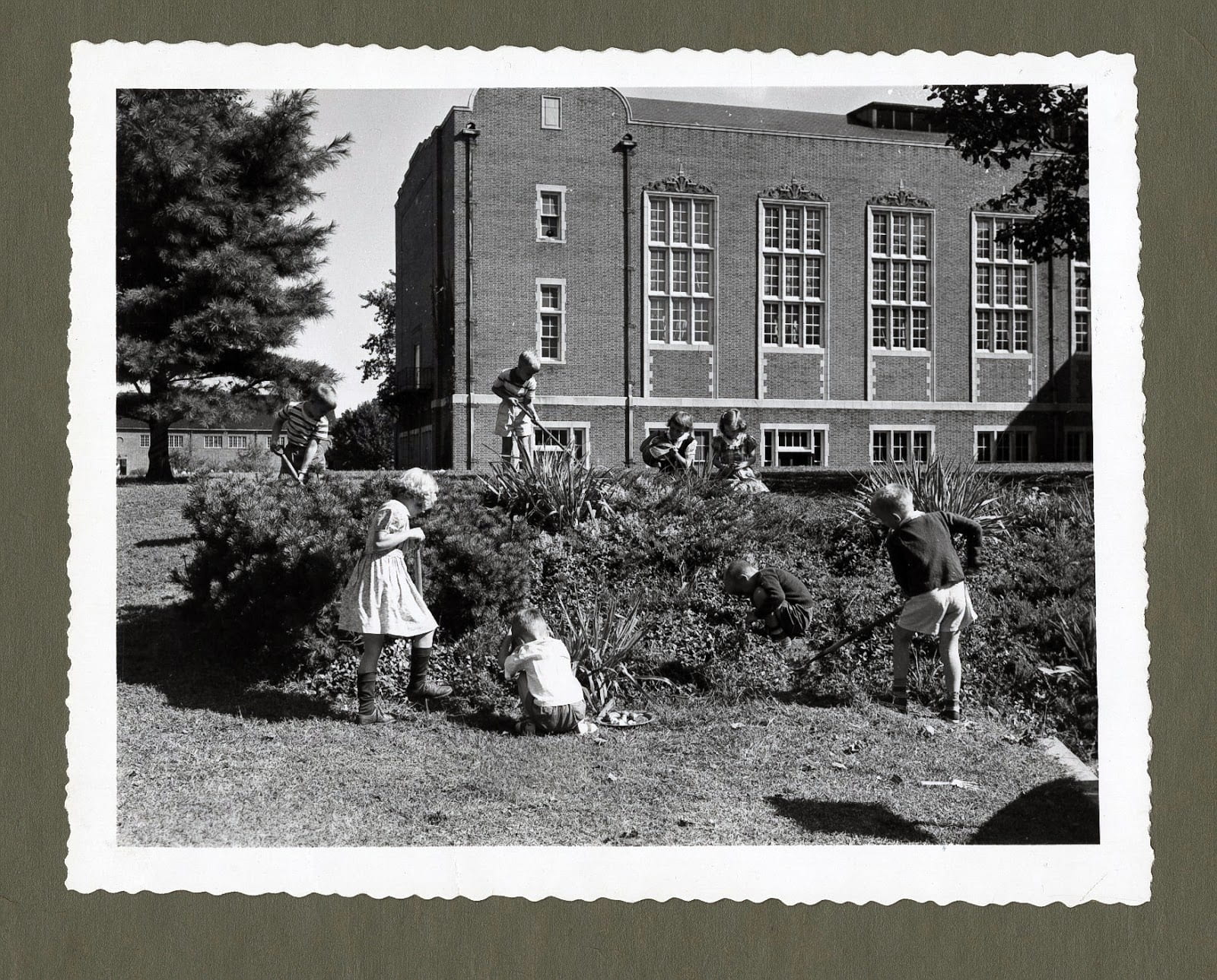
The Lida Lee Tall School (originally named The Model School) was primarily used as a campus demonstration elementary school in the Maryland State Normal School to help train teachers. It was established with the act of 1865 by the General Assembly of Maryland which provided for a “uniform system of free public schools for the State of Maryland.” That same act stipulated that, “He [the State Superintendent] shall make provision for model primary and grammar schools under permanent and highly qualified teachers, in which students of the Normal School shall have opportunity to practice the modes of instruction and discipline inculcated in the Normal School.”
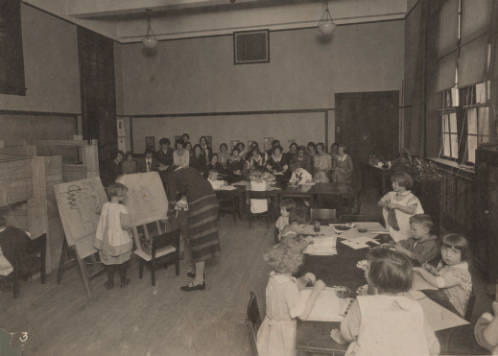
The first Lida Lee Tall School was opened in a rented house on Broadway, Baltimore City, in September 1866 under the supervision of Mary Borgman, and was conducted by one of the teachers of the State Normal School with the assistance of a number of students. After only one year, the Model School was moved to a bigger house on Fayette Street. Then, in 1872, the school was moved once again to the Athenaeum Building at Charles and Franklin Streets. This was the first time that the Model School was housed in the same building as the State Normal School.
With the relocation of the Maryland State Normal School to Towson in September 1915, the Model School was moved and housed in the basement and first floor of Stephens Hall. And although the new name of Normal Elementary School was introduced, the name of Model School persisted. Beginning in 1916, the Normal Elementary School became a free public school, with Baltimore County paying the salaries of several teachers, and the state covering the remaining expenses.
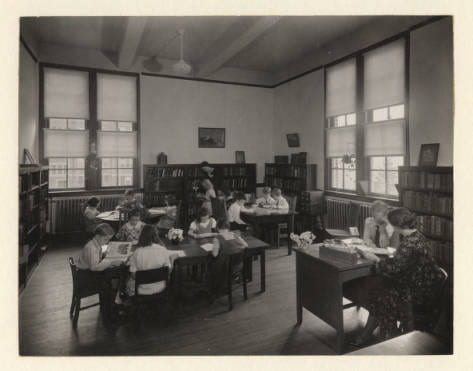
There was rapid growth during the 1920s, and needs for better facilities became evident. An elementary school library was opened in February 1926, and in 1931, the Legislature passed a bill to appropriate funds for the building of a new elementary school. Up to this time, the Normal Elementary School had occupied rooms in the Administration Building, sharing the space with the regular campus students. The new elementary school building was occupied in February 1933, the present-day Van Bokkelen Hall.
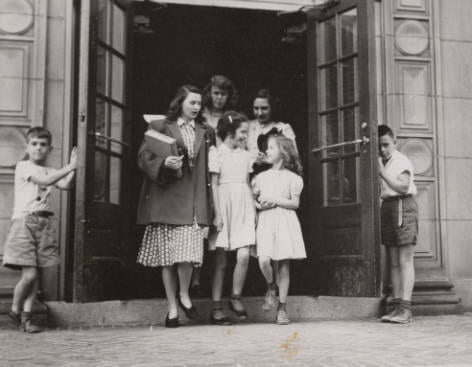
the present-day Van Bokkelen Hall
In 1931, the State Normal School changed its program from a two-year to a three-year course of study, and then to a four-year degree-granting college in 1934. The following year its name was officially changed to the State Teachers College at Towson. These changes required rapid modifications and revisions in the Normal Elementary School’s curriculum. In 1942, the Normal Elementary School was renamed the Lida Lee Tall School, after the seventh principal and the first president of the State Teachers College at Towson, Lida Lee Tall. By 1959, plans for a new building were approved, and eventually erected in 1960, which was to accommodate around 550 students.
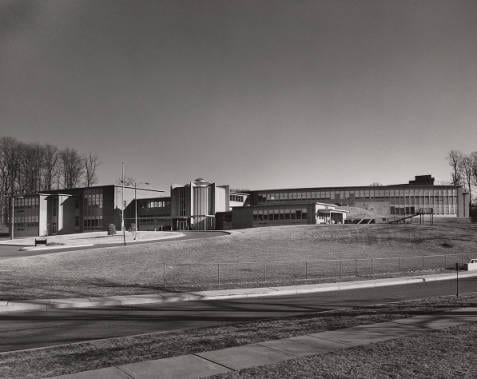
The Lida Lee Tall School was threatened with closures in 1968 and 1974 by the Board of Trustees of the Maryland State Colleges, primarily due to lack of funds, which led to reevaluations of the experiences, opportunities, and benefits of campus-affiliated laboratory schools. The state’s budget reductions for higher education in the early 1980s resulted in yet another attempt to close the school by the Board of Trustees. In February 1981, a public hearing was held regarding the fate of the Lida Lee Tall School. More than 500 people attended the hearing to show their support of the school, and more than 50 speakers testified for its continuance. A petition was also endorsed by more than 400 full-time faculty from various departments within the University.

Nonetheless, the Board of Trustees voted to close the school, leading to the request by Towson State University to have a separate Board and the present one dissolved. Accordingly, House Bill 1494 and Senate Bill 610 were introduced and passed by the 1982 General Assembly in support of the continued operation of the Lida Lee Tall School. The school ceased to be a program of the University, but utilized by students and faculty in teacher education. It became an independent elementary school, controlled by a new administration, the Education Coordinating Committee (ECC).
The Lida Lee Tall School, which by the early 1970s was referred to as the Lida Lee Tall Learning Resources Center, ceased its operations in 1991.
